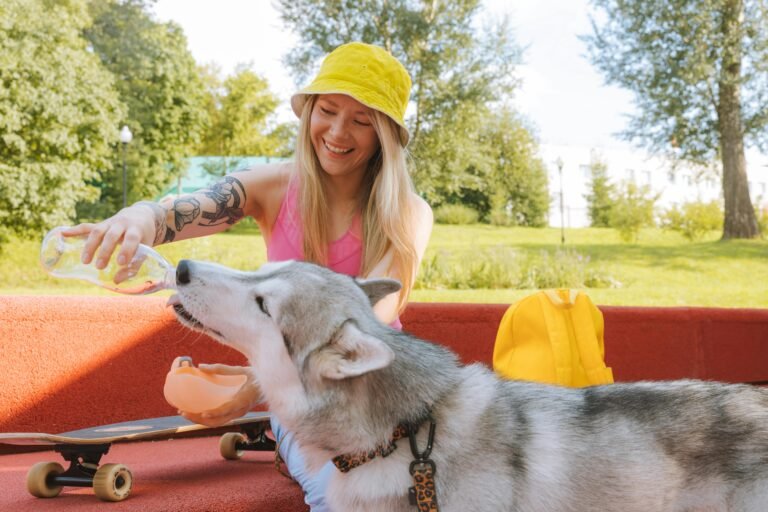Understanding Dog Tail Positions
The tail of a dog serves several important functions, both in terms of communication and balance. To comprehend the significance of dog tail positions, it is crucial to first understand the basic anatomy of a dog’s tail and its variations across different breeds. The tail is primarily composed of vertebrae, muscles, and skin, and is capable of a wide range of movements. Each dog breed has specific characteristics that dictate the shape, length, and even the natural positioning of their tails. For instance, while some breeds like the Greyhound feature long, slender tails, others such as the Bulldog may possess shorter, more stocky tails.
Normal tail positioning can vary greatly depending on the dog’s emotion or state of mind. A tail held high and wagging enthusiastically often signifies happiness and excitement, whereas a tail tucked between the legs generally indicates submission or fear. Additionally, when a dog holds its tail in a neutral position, it often reflects a relaxed and content demeanor. Understanding these nuances in tail positions can provide insights into the dog’s temperament and mood.
Moreover, it is essential to recognize that individual tail characteristics can differ significantly even within a single breed. Some Golden Retrievers may naturally carry their tails higher than others, and this can further influence interpretations of their emotional state. By appreciating these subtle differences in tail positions, we can better understand canine communication and behavior. Tail movements, therefore, become an essential aspect of dog body language, allowing us to gauge their emotional responses and provide a more harmonious environment for these beloved companions.
Tail Position and Emotional States
The position of a dog’s tail serves as a significant indicator of its emotional state. Understanding these tail positions can provide valuable insight into what a dog is feeling at any given moment. This chapter focuses on the different emotional states conveyed through various tail positions, such as high, low, tucked, or wagging.
A tail held high usually signifies a happy and confident dog. This position often indicates excitement or joy, particularly when accompanied by playful behavior. For instance, when a dog greets its owner after a long day apart, a high tail position frequently accompanies enthusiastic barks and spinning in circles, demonstrating overall happiness. Conversely, a tail that is low could denote fear or submission. For example, a dog may hold its tail low when it encounters new situations or animals that make it uncomfortable, signalling a desire to avoid confrontation.
The “tucked” tail position, where the tail is drawn in towards the body, is generally associated with a sense of fear or anxiety. This defensive gesture can be observed in dogs that are facing intimidating situations, such as loud noises or aggressive encounters. An instance of this could be a dog that tucks its tail during a thunderstorm, conveying its distress and need for safety.
On the other hand, a wagging tail typically signifies excitement or attentiveness. However, the speed and height of the wag can provide further context. A rapid wag at a high position often indicates joy, while a slow wag at a lower position might reflect uncertainty or submission. Observing these subtle shifts in tail position can greatly improve one’s understanding of a dog’s emotional state, helping to foster better communication and relationships between humans and their canine companions.
Tail Wagging: More Than Meets the Eye
Tail wagging is often perceived as a universal sign of a dog’s happiness and eagerness, but the reality is far more nuanced. Understanding the intricacies of a dog’s tail movements can provide crucial insights into their emotional state. The speed, direction, and height of a wag can convey various feelings ranging from excitement to anxiety, and even aggression. For instance, a quick, high wag typically indicates enthusiasm or joy, while a slow, low wag might suggest submission or a cautious demeanor.
The notion that all tail wags are synonymous with friendliness is a misconception that can lead to misunderstandings. A wagging tail can be a component of aggressive posturing in certain contexts. For example, if a dog wags its tail while approaching with a stiff posture and direct eye contact, it may be signaling dominance rather than affection. Furthermore, the direction of the tail wag plays an important role in interpreting a dog’s mood. Research indicates that dogs may wag their tails more to the right when feeling positive and to the left when experiencing negative emotions.
To accurately assess a dog’s emotional state, it is essential to consider the broader context of their body language. Factors such as ear position, eye contact, and overall demeanor should all be weighed alongside tail movements. A relaxed dog exhibiting a gentle wag might be inviting interaction, while a tense dog with a high, stiff tail might be indicating discomfort or heightened vigilance. Nuances in tail wagging reflect a complex communication system that dogs use to express their feelings. Understanding these signals can enhance our relationships with our canine companions, fostering better communication and mutual understanding.
Practical Tips for Dog Owners
Understanding your dog’s tail position can significantly enhance the bond between you and your furry companion. By closely observing and interpreting these signals, you can respond appropriately and promote a healthier, more communicative relationship with your dog. Here are several practical tips to help you become more adept at reading your dog’s tail signals.
Firstly, familiarize yourself with the common tail positions and their corresponding meanings. A high, wagging tail typically indicates happiness and excitement, while a low, tucked tail may suggest fear or submission. Take time to watch your dog in various situations – at home, in the park, or when interacting with other dogs – to gauge what their tail positions convey in those contexts.
When you observe your dog displaying a particular tail position, consider the surrounding circumstances. Is your dog playing with friends or encountering a new person? Context is critical; an upright, wagging tail amidst playtime could reflect enthusiasm, whereas the same position during an unfamiliar encounter might signal apprehension. By understanding these nuances, you can better respond to your dog’s needs.
If you notice a tail position that suggests distress, such as a tucked tail combined with avoidance behaviors, approach your dog calmly and gently. Reassuring them with a soothing voice and possibly offering a treat can help alleviate anxiety. Conversely, if a dog shows signs of aggression through a stiff tail in a raised position, it’s vital to maintain a safe distance and avoid direct eye contact to prevent escalation.
Lastly, practice observing your dog’s tail alongside their overall body language, as the tail is just one component of their communication. By being attentive and responsive, you can deepen your understanding of your dog’s emotions and cultivate a more trustworthy and loving bond.






